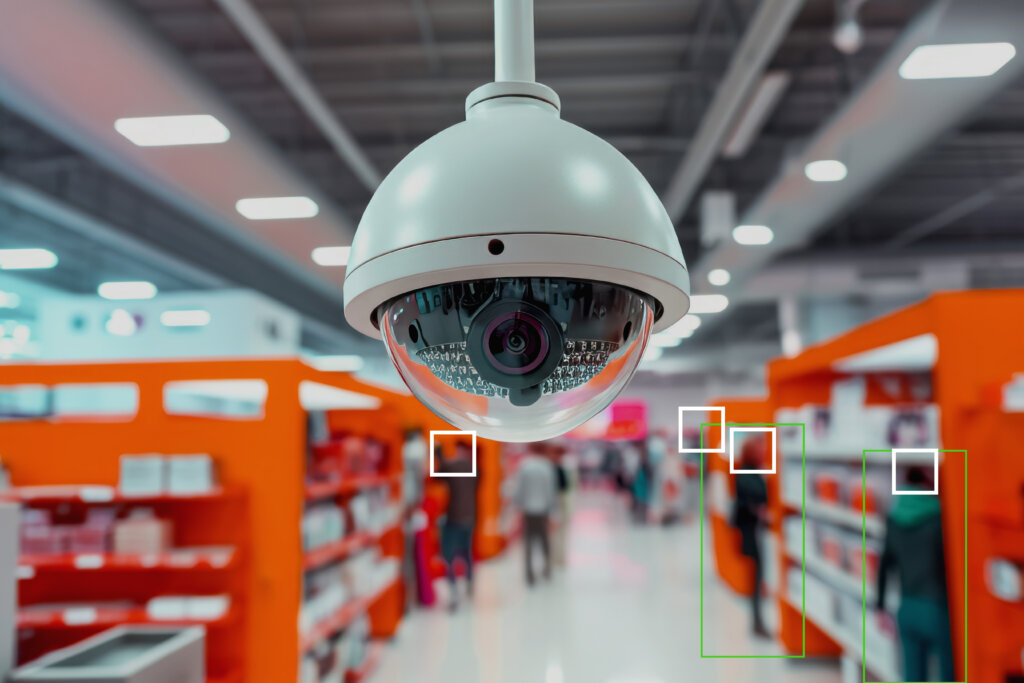New Police Technology 2025: The Future of Law Enforcement
Law enforcement is stepping into a high-tech future, driven by artificial intelligence (AI). In 2025, cutting-edge tools like AI-powered analytics and facial recognition software will continue to transform crime prevention.
Real-time data analysis, object detection, and predictive models already save lives by identifying potential risks in seconds. And that’s just the beginning. Next-gen drones and imaging technology are redefining what’s possible, enabling faster responses, smarter policing, and safer communities.
But with progress come big questions: Can new police technology equipment balance privacy, safety, and security? Are they accessible and ethical?
Let’s explore the latest trends, tools, and challenges shaping the future of policing.
The Evolution of Policing Tools
From whistles to walkie-talkies, policing tools have adapted to meet the demands of their time. While basic by today’s standards, early law enforcement technology was groundbreaking in its day.
Take fingerprinting, for instance. According to The Fingerprint Sourcebook, the first criminal case solved using this method was in 1892. The practice dates back as far as 300 B.C.
Early technologies also included the telegraph and the Bertillon system, which identified criminals through physical measurements. By the 1920s, many of these tools had become standard in policing.
Since then, each decade has brought new innovations, laying the groundwork for the cutting-edge tools we see today. Here are a few notable milestones:
- 1930s: Early Crime Data Systems
The introduction of computerized crime tracking allowed police departments to analyze data and identify patterns. These basic systems, like the FBI’s Uniform Crime Reporting (UCR), system were pivotal to early crime prevention efforts.
- 1960s: Adoption of Computer-Aided Dispatch (CAD) Systems
The 1960s saw the implementation of CAD systems, which streamlined the dispatching of emergency services through automation. This innovation enabled faster response times and more efficient resource management during emergencies.
- 1980s: Automated Fingerprint Identification Systems (AFIS)
AFIS supercharged the time-consuming process of identifying suspects, leading to more efficient criminal investigations. It marked a turning point in leveraging technology for criminal justice.
- 2010s: Predictive Policing Software
With the advent of AI-driven predictive policing, law enforcement began forecasting potential crime hotspots. These proactive crime prevention efforts marked the beginning of data-driven policing.
A Quick Glance at US Crime Statistics
The FBI reported a 15% drop in violent crime in early 2024, including notable decreases in homicides and robberies. On the flip side, shoplifting surged by 24%, surpassing pre-pandemic levels.
The Council on Criminal Justice (CCJ) also highlights some interesting stats on criminal activities in the United States. In its 2024 Mid-Year Crime Report, the CCJ’s found that, in the first half of 2024:
- Residential burglary reports fell by 14%.
- Non-residential burglaries dropped by 10%.
- Larcenies decreased by 6%.
- Gun assaults rose by 1%.
- Carjackings increased by 68%.
According to Zappia, white-collar crime imposes annual losses of up to $1.7 trillion. Yet, it only makes up an estimated 3% of federal prosecutions and affects around 35% of US businesses.
Overall, the public’s perception of safety isn’t reassuring. 63% of Americans view crime as a serious issue. To address these worries, modern police departments have turned to groundbreaking innovations— transforming how we combat crime.
The Age of AI-Driven Law Enforcement
If you use the internet, you’ve probably heard the terms ‘predictive analytics,’ ‘AI,’ and ‘machine learning’ (ML). Predictive analytics uses statistical models, historical data, and AI algorithms to make educated guesses about the future.
AI goes beyond just predictions. It uses complex algorithms to mimic human thinking and decision-making. This means it can analyze data (like live feeds from security cameras) to identifiy potential crime in real time.
Here’s where it gets even cooler:
Machine Learning is a branch of AI that helps systems learn and improve over time without needing constant programming. The more data it processes, the better it gets at identifying risks or predicting outcomes. It’s like AI’s self-improvement feature.
Emerging Threat Detection and Crime Prevention Technologies: 5 Real-World Examples
AI-driven technological advancements are shaking things up in just about every industry—and criminal justice is no exception. Here’s how new police technology in 2025 offers smarter ways to prevent criminal activities, identify dangerous situations, and even save lives.
1. Predictive Policing
How it works: Law enforcement agencies use machine learning models to analyze patterns in past crimes. These include types, times, and locations to identify high crime areas.
Impact: Proactive patrolling based on predictions has shown to reduce crime rates and improve community safety. For instance, one AI model predicted crime a week in advance with 90% accuracy.
2. Object Detection Technology
How it works: AI-powered object detection systems analyze live surveillance feeds to identify specific objects or activities. These include firearms, loitering, intruders, or even fires. Using advanced algorithms, such systems can prevent crime.
Impact: Enhances situational awareness and speeds up response times to potential threats. For example, Actuate AI’s threat tracking technology has been used to identify firearms and suspicious activity in real-time. The result? Reduced false alarms and improved public safety at schools and commercial facilities.
3. Early Intervention Systems (EIS) for Officer Behavior
How it works: EIS predictive models monitor police officers’ behavior. They analyze complaints, use-of-force incidents, and overtime hours to identify patterns of stress or misconduct risk.
Impact: Helps police departments proactively address issues before they escalate, promoting accountability and community trust.
4. Robotic Law Enforcement Units
How it works: Robots with AI are stepping up for tasks like crowd control and threat detection. In China, some robots even patrol streets, using AI to spot threats and deploy tear gas if needed.
Impact: These robots help keep people safe by watching over busy areas and acting fast in emergencies. Plus, they take on risky jobs, keeping law enforcement personnel out of harm’s way.
5. Facial Recognition Systems
How it works: AI-powered facial recognition software analyzes surveillance footage and public images. to identify individuals by comparing their features against a database of known faces.
Impact: Identifying suspects and missing persons is quicker and easier. For example, the UK’s Metropolitan Police successfully used live facial recognition to identify suspects wanted for serious crimes.
The Future of Law Enforcement and Public Safety
The next wave of policing technology is set to completely change how law enforcement officers do their jobs. From advanced robotics to drones, these innovations promise to offer unprecedented capabilities.
Advanced Imaging
New imaging tools like hyperspectral imaging (HSI) can analyze chemical traces without damaging evidence. Meanwhile, BulletTrax-3D uses high-res 3D imaging to match bullets with remarkable precision.
Drones in Policing
Noticed any drones or unmanned aerial vehicles (UAVs) lately? Equipped with thermal imaging, they’re already used for surveillance and search-and-rescue operations. Looking ahead, multi-drone networks could enable predictive patrols and coordinated responses.
Smarter Situational Awareness
Augmented reality (AR) smart glasses like Google’s Android XR Glasses could change the future of policing. Imagine real-time overlays of data, facial recognition, and instant access to databases—all hands-free. While still emerging, these tools could enhance situational awareness and improve officer safety.
Ethical, Privacy, and Implentation Challenges
While law enforcement technology advancements offer remarkable potential, they also spark significant concerns. Key issues include:
- Misuse of facial recognition, which can lead to wrongful accusations.
- Extensive surveillance systems that risk infringing on individual privacy.
- Algorithmic biases in AI-driven tools, such as gunshot detection systems and predictive policing programs, which can result in unfair or distorted outcomes.
Striking the right balance between civil liberties and public safety is no easy feat. But it means building transparent systems that focus on accountability and ethical use.
To make the most of emerging police technology equipment, proper training is key. Without it, tools can end up underused or even misused.
Earning and keeping public trust is just as important. This calls for clear communication, strong privacy protections, and policies that genuinely address community concerns.
By tackling these challenges head-on, law enforcement agencies can make sure everyone benefits from these innovations.
Shaping the Future of Safer Communities
Law enforcement technology is shaping a safer future. And it’s pretty exciting to see how AI, machine learning, and real-time tools are revolutionizing crime prevention. Of course, tackling the ethics of AI in security is just as important as the tech itself.
Want to see how Actuate’s AI technology is making a difference in public safety?
Check out our AI video analytics solutions—they’re changing the game in more ways than one.
By staying curious and advocating for responsible use, we can all play a part in creating a future that’s secure, fair, and built on trust.




